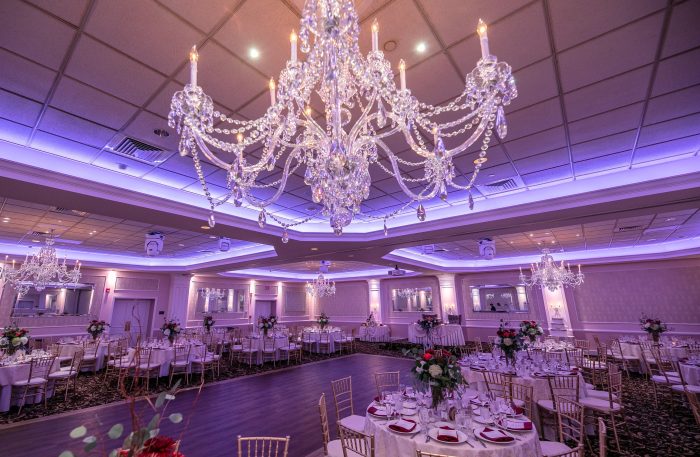Getting married or planning a big celebration like a bar/bat mitzvah, sweet 16, etc? Selecting the right venue is usually one of the first priorities. Its also (typically) your biggest expense and generally sets the tone for the rest of your event planning decisions. In recent years, many venues (at least here on the East Coast) have updated their spaces and installed varying levels of specialty event lighting. The purpose of this blog is to make sense of venue installed lighting, help you understand what you are getting when a venue offers lighting and provide you with the right questions to ask.
First off… we appreciate that venues are looking to modernize their space and adapt to changing times. The addition of ambient lighting can truly transform a room. However, installed lighting can come in varying levels of effectiveness, personalization and options.
To begin, let’s make sure to explain the different types of lighting a venue may install, offer or sell to you.
- LED up, down, or tray lighting. What’s this mean? Well… traditionally, DJs or lighting companies bring battery powered LED lights to a venue and place them on the floor pointing up against a wall, therefore washing this wall in a solid or multiple changing color. Venues have an advantage over mobile DJs in this department, since they can permanently and neatly install these lights either from a ceiling down (called down lighting) or in floors or pillars washing up (called up lighting) and finally within ceiling trays or coves (appropriately called ceiling, tray or cove lighting).
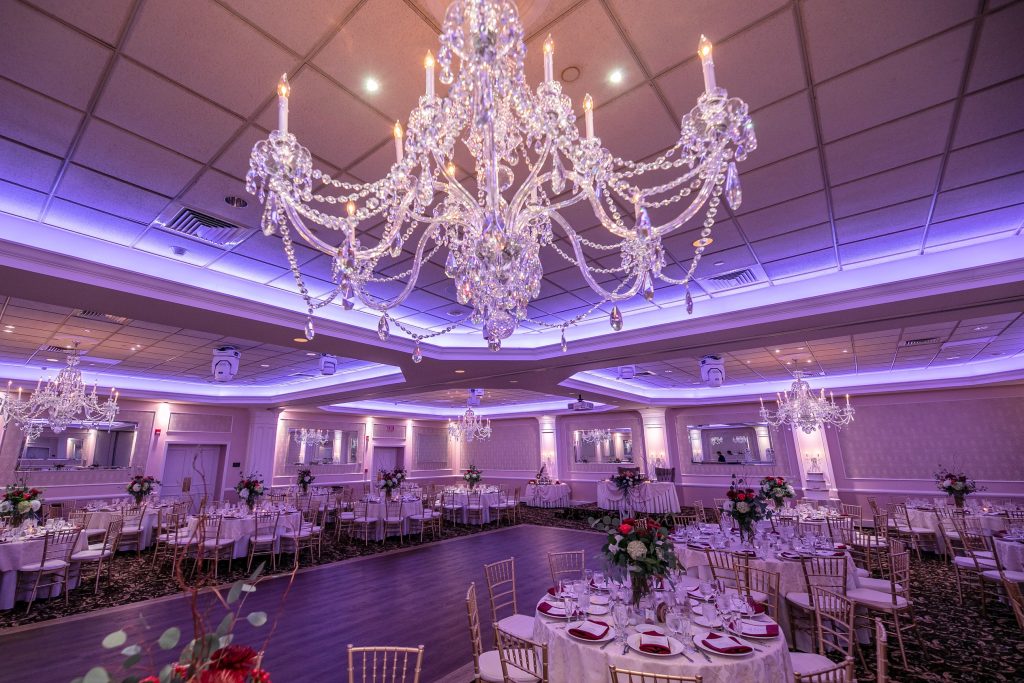
Elegant Periwinkle Colored Ceiling Tray lighting and white downlighting at the Bridgewater Manor
- Intelligent or moving head lighting. This is an entirely different category of lights. The term “intelligent” when referred to lighting means controllable. Moving heads are the style of lights you are most used to seeing at night clubs, fashion events, concerts or TV shows like American Idol. These lights look like large eggs mounted to a base with the ability to spin on an X and Y axis almost freely. These lights can project beams or washes of color. This style of light is most commonly used for dance floor effects and spot lighting for grand entrances or specialty moments.
- Gobo projection is the last form of light we will address in this blog. A gobo projection is simply a means of shining your name, date, event name, theme, or logo onto a wall ceiling or floor. This can be accomplished using a video projector or a bright and still projector with a metal (or sometimes glass) cutout allowing only the shape of the “gobo” to be projected. Imagine the Batman logo shining into a sky.
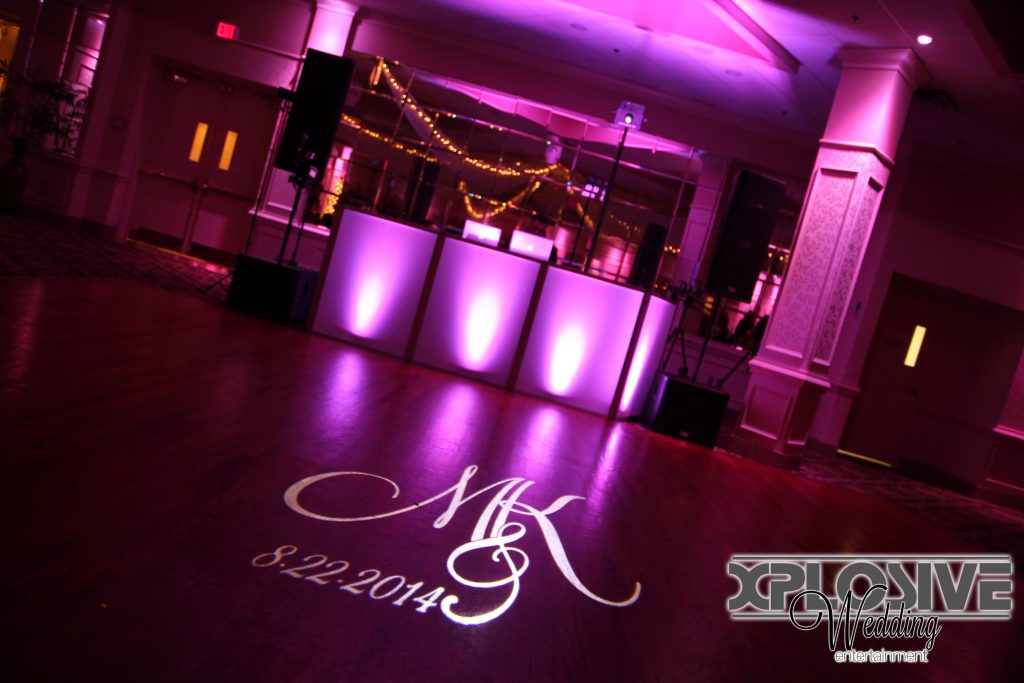
Sample of a monogram gobo at Battleground Country Club
- What will not be address in this blog are old fashion, cheap or cheesy lights which you may imagine when thinking of a roller rink or really old night club. These lights are notorious for “puking” random colors, dots, patterns in a haphazard fashion within the room. Very clearly put, unless you are planning a 70’s disco party, PLEASE stay away from this type of lighting. It will destroy your potential to capture high quality photographs, and frankly look cheep, cheesy and lame.
Now that you are educated on the type of lights available, the next item to discuss is functionality.
We see many venues install amazing lights (up, down, cove, tray, intelligent, etc) but they have such limited functionality due to the way the lights were installed or programmed. This is like buying a Ferrari, but only driving it 25 miles per hour. When any of these lights are purchased and installed, the installer must create “scenes” or “programs” telling the lights what they can do. These “scenes” or “programs” allow the venue manager, lighting technician, or user to select from pre-built options. These options may include static colors, static positions, changing patterns, or programs with motion.

Pink and white ceiling tray lighting at Clarks Landing in Point Pleasant
The questions you should be asking when a venue offers or sells their installed lighting to you are as follows:
- What are my options? Can I select a specific color? (Hint, not all pinks are the same. Blush pink, bright pink, neon pink are all variations of pink. Can you specify or does the program only offer one shade)/.
- Is there moving and changing patters to the lights for dance sets? (Recently as a DJ, I performed at two separate venues in the same weekend which both “sold” their client on the fact they have a great installed light show, yet, the movement and patterns for the lights stayed the same regardless of the song tempo. Meaning a fast or slow song still had the same effect.
- Is there anyone on site who can control the lights during the party? Sometimes the venue has an assigned tech to run the lights. Otherwise it is the matri’d and in some ideal situations, the venue gives an iPad to the DJ to run in sync with their music.
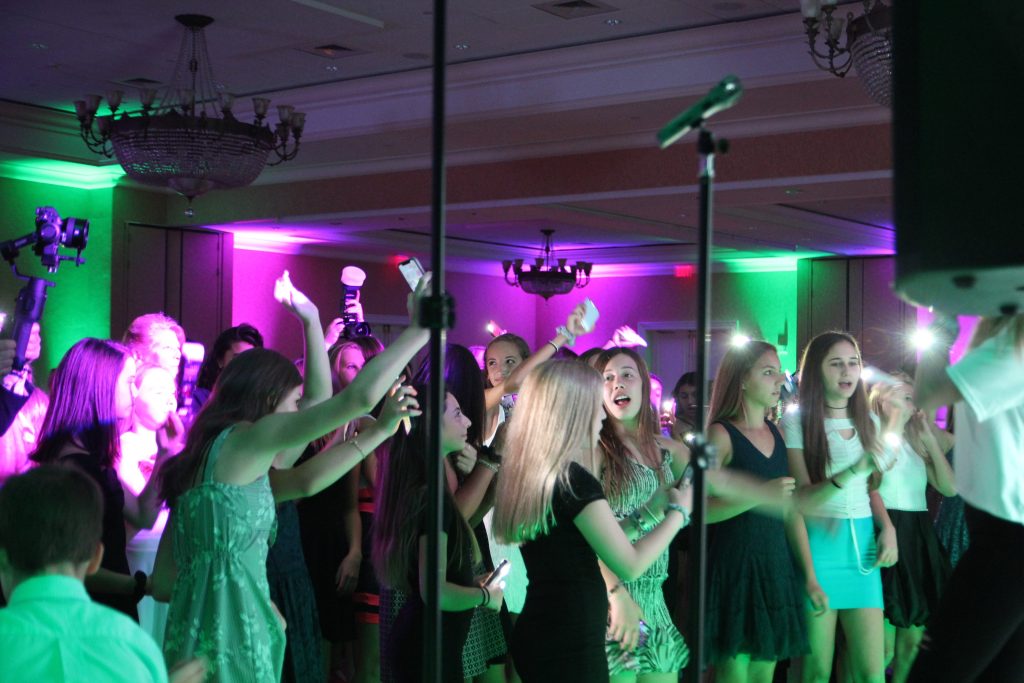
DJ Provided two tone up lighting
While this blog is directed to educating consumers on venue installed lighting, many of the points noted also apply to hiring a mobile DJ with contracted lighting.
The overall goal here is to those planning events understand that “not all lighting is created equally.” Some venues really do lighting well. Others, however should focus on food and beverage allowing entertainers or lighting designers the ability to customize a light show for the celebration at hand. We suggest you ask questions, see a demo and know what you are getting!
For any questions, do not hesitate to call, email or comment here.
Ceiling Tray Lighting
Prepared by Michael Langsner
Xplosive Entertainment
732-866-1620
www.XEevents.com
michaell@Xeevents.com





 (866) XPLO-ENT (732) 866-1620
(866) XPLO-ENT (732) 866-1620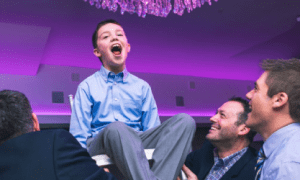
 Mitzvah Resources
Mitzvah Resources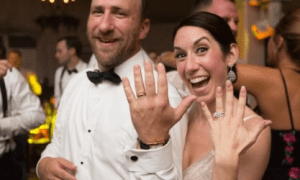
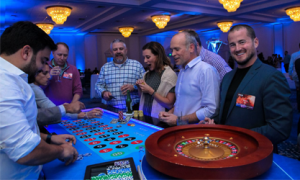
 Team Building
Team Building Picnics and celebrations
Picnics and celebrations Meetings and AV support
Meetings and AV support
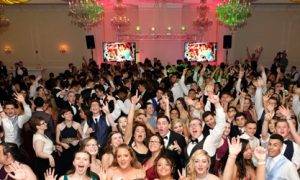
 Project Graduations
Project Graduations proms, homecoming, dances
proms, homecoming, dances
 sweet 16s
sweet 16s Milestone Celebrations
Milestone Celebrations

